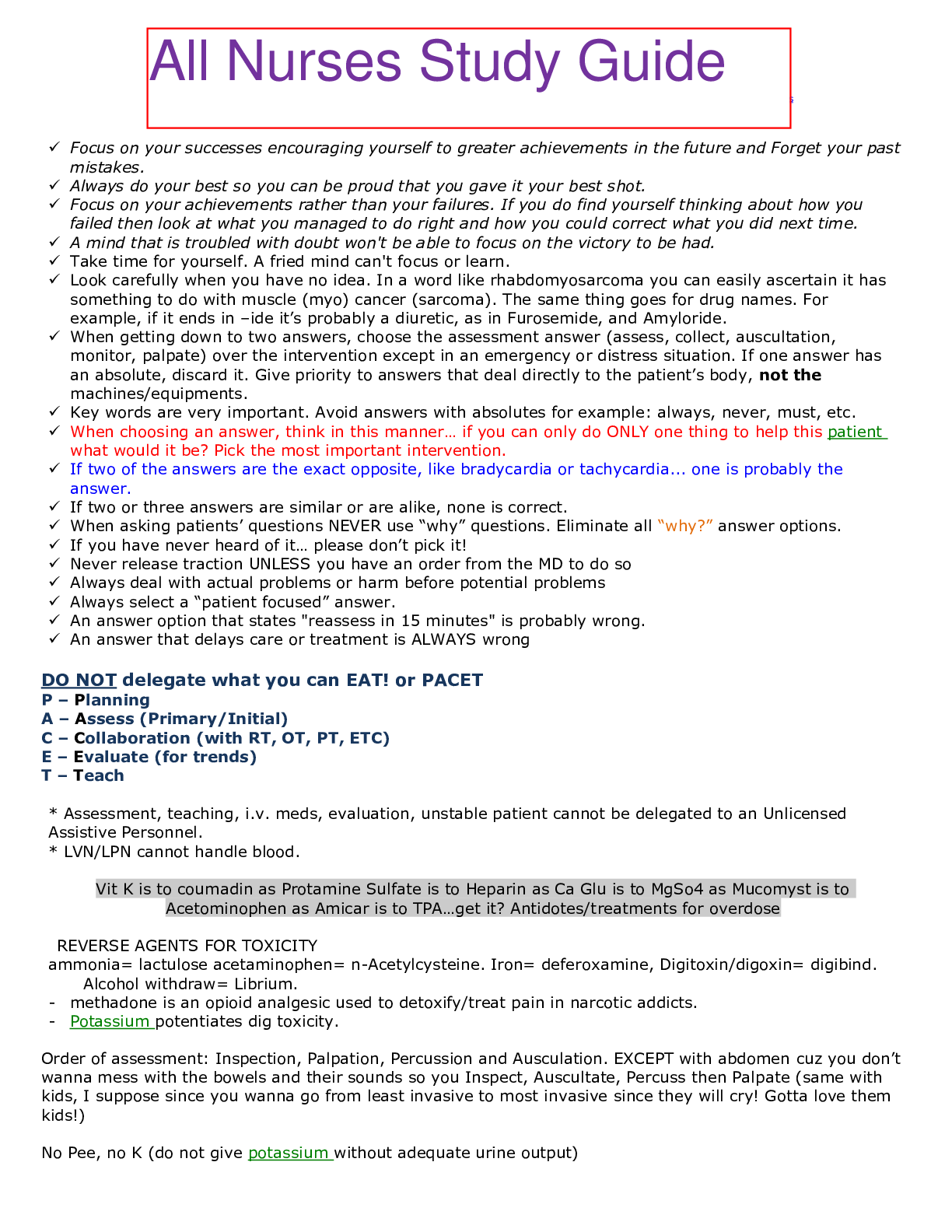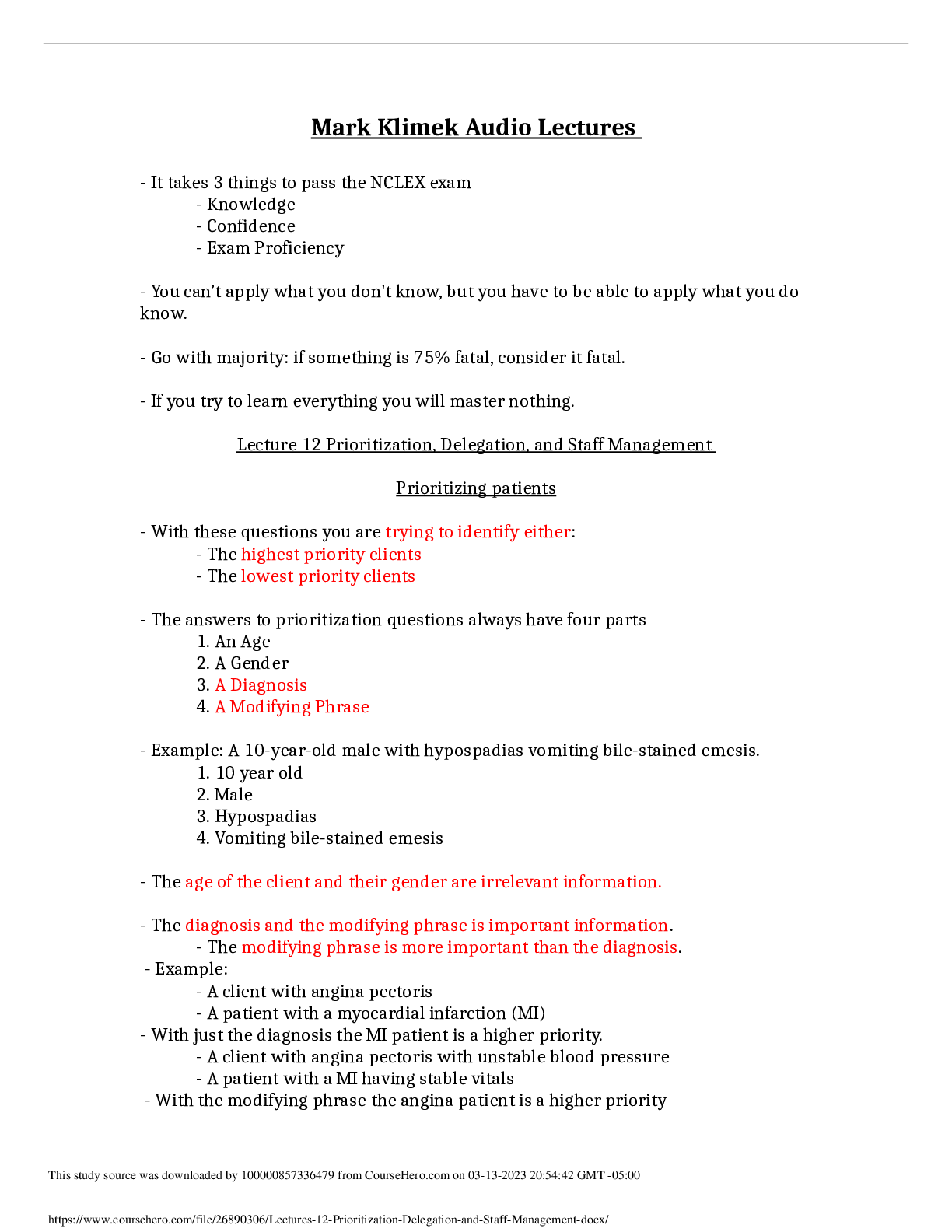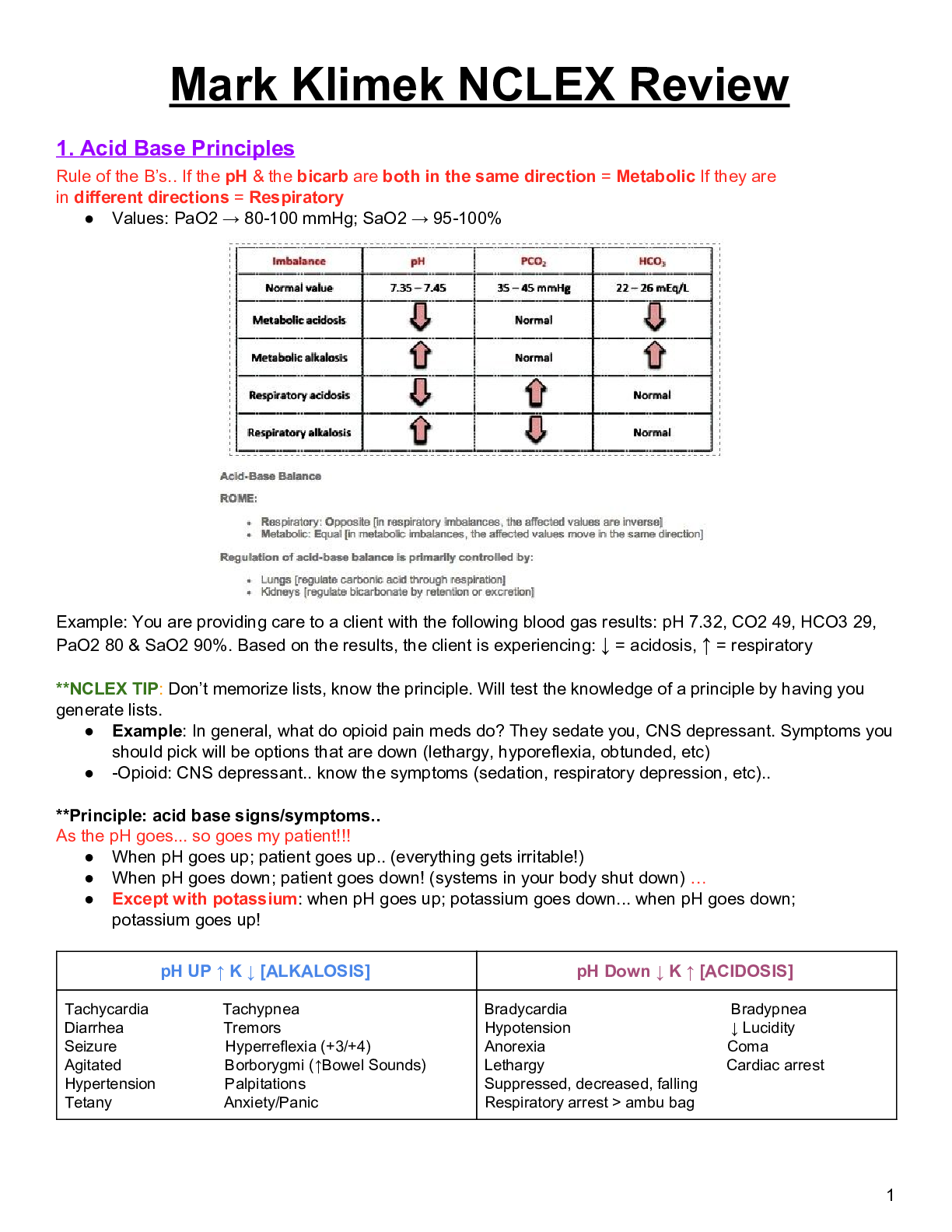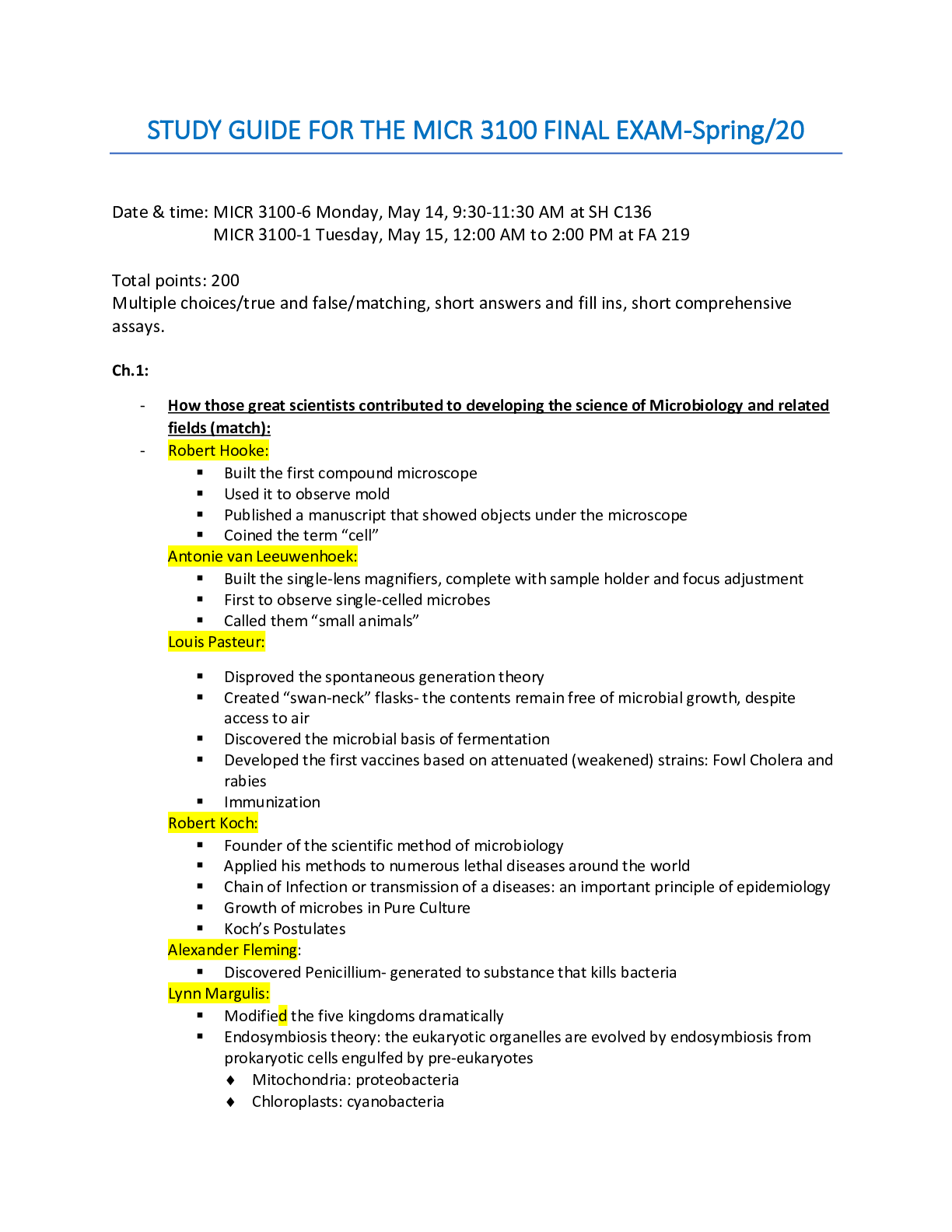*NURSING > STUDY GUIDE > EMT FINAL STUDY GUIDE. For Quick Exam Preparation. (All)
EMT FINAL STUDY GUIDE. For Quick Exam Preparation.
Document Content and Description Below
Final ● Stridor ○ Abnormal, high pitched, musical breathing sound caused by a blockage in the larynx and usually heard when taking a breath ○ High-pitched, upper-airway sounds indicating par... tial obstruction of trachea or larynx ● HIPPA law ○ Information shared with other health care personnel as part of patient’s continuing care ○ Confidentiality ● Hypovolemia ○ Low fluid/blood volume causes dizziness or syncope, especially when patient attempts to sit up or stand ○ Source of bleeding may not be obvious ○ Hypovolemic shock ■ Results from a decreased volume of circulating blood and plasma ■ Called hemorrhagic shock if caused by uncontrolled bleeding (internal or external) ■ Can be caused by burns or crush injuries or severe hydration ● Spinal bones: ○ Cervical (7) ○ Thoracic (12) ○ Lumbar (5) ○ Sacral (5) ○ Coccyx (4) ○ Each has a spinous process ● Aerobic and anaerobic metabolism ○ Aerobic ■ Cellular functions using oxygen ○ Anaerobic ■ Cellular functions not using oxygen ■ Creates much less energy and much more waste ■ Body becomes acidic, impairing many body functions ○ Oxygen, water, and glucose necessary for life function ● Airway / head-tilt-chin-lift ○ Move structures into position allowing air movement ● Ventilations ○ Adequate artificial ventilation rates ■ 12 breaths per minute for adults■ 20 breaths per minute for infants and children ○ Increasing pulse rates can indicate inadequate artificial ventilation in adults ○ Decreasing pulse rates can indicate inadequate artificial ventilation in pediatric patients ■ In the early stages, their pulse rate will probably increase, but may slow down after bagging them for a while ● How to reduce gastric distension ○ Do not push a big amount of air into patient ○ Look for chest rise and fall ● Primary assessment vs general impression ○ Primary assessment ■ 2 questions ● Is the airway open? ● Will the airway stay open? ○ General impression ■ First judgement of the patient upon arrival ■ Assesses environment, patient’s chief complaint, and appearance ■ Helps determine patient severity ■ Helps set priorities for care and transport ■ The “Look” test ● Feeling from environmental observations as well as the first look at patient ■ Identify patients who may be critical ● Systolic vs. diastolic ○ Systolic ■ Arterial pressure when the left ventricle contracts ■ Upper reading ■ Squeezing of heart ■ Normal range is no greater than 120 ○ Diastolic ■ Arterial pressure when the left ventricle refills ■ Lower reading ■ Relaxing of the heart [Show More]
Last updated: 2 years ago
Preview 1 out of 13 pages

Buy this document to get the full access instantly
Instant Download Access after purchase
Buy NowInstant download
We Accept:

Reviews( 0 )
$11.00
Can't find what you want? Try our AI powered Search
Document information
Connected school, study & course
About the document
Uploaded On
Nov 22, 2021
Number of pages
13
Written in
Additional information
This document has been written for:
Uploaded
Nov 22, 2021
Downloads
0
Views
174










.png)






